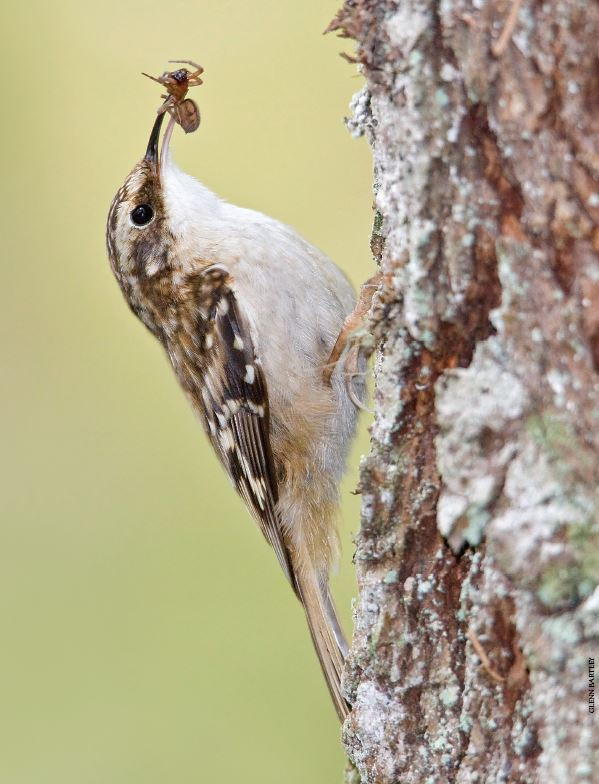The Creeper
Brown creepers are not the stuff of nightmares. They are very nice birds--if a little preoccupied.

A brown creeper finds itself a snack. The birds characteristically corkscrew their way up tree trunks in search of prey.
The name brown creeper (Certhia americana) may sound sinister—conjuring images of something hidden and hunchbacked, skulking through the pages of a comic book—but, in reality, brown creepers don't live in the dark and think bad thoughts, although they do appear a little hunchbacked. They are actually inconspicuous, quiet, and endearing LBJs (birding lingo for Little Brown Jobs) that are entirely preoccupied with only that small portion of the world directly in front of their bills (and, occasionally, behind, sideways, and up or down, as needed for safety). This little feathered Quasimodo blithely lets the world journey past as it flutters and flits from tree trunk to tree base, intent upon its daily quest for bugs, caterpillars, spiders, and other tasty morsels living in the trees' ecosystem. Brown creepers are so intent upon their purpose that they treat large intruders, such as you and me, as relatively insignificant intrusions into their daily affairs.
Brown creepers have a characteristic behavior that is unique among North American bird species. After landing at the base of a tree, the little bird spirals up the trunk, going around and around, corkscrew-like, until it reaches a height of 10 feet or so. Then, the creeper flits to the next tree in its line of sight and begins the corkscrew hunt again.
Just before the bird lands on a tree trunk, it flares its wings and twists its body so that it can grab the base of the tree in a vertical position with its feet on either side of its body, immediately ready to climb again. Watching a brown creeper flit from tree to tree is a delight—their last minute twist in the air is an uncanny impression of a blown leaf twisting in the wind. The camouflage is so good that when real fallen leaves are skittering across the forest floor, this little bird can go entirely unnoticed in the breeze as it gently flits between tree trunks.
This article is from the Fall 2011 issue. For more information on our issues, check out our issues page.
Read NextApartment Dwellers



